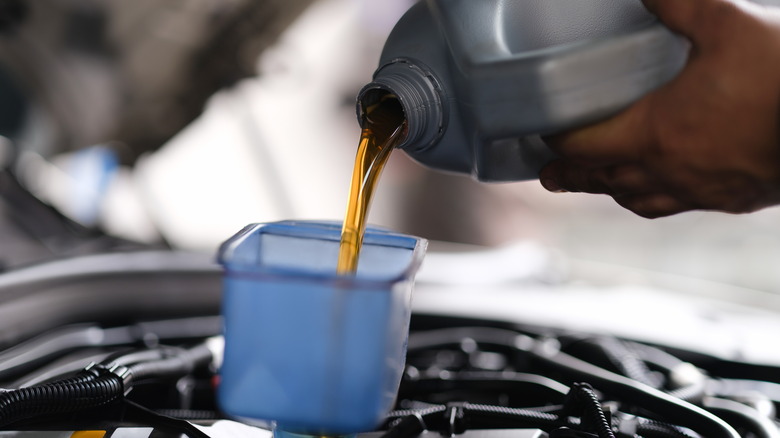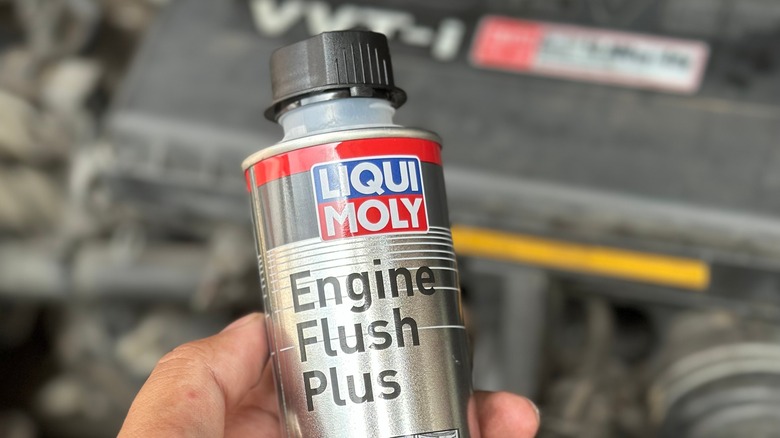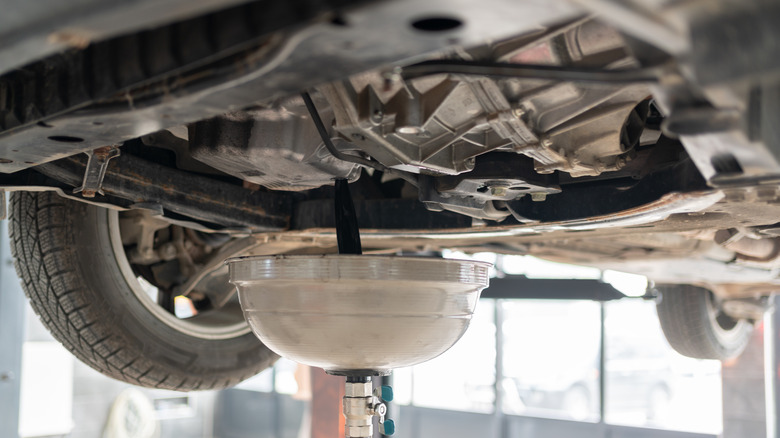Are Engine Flushes Safe And Do They Actually Work?
Yours truly has a neutral opinion regarding engine flushes: I believe engine flushes are only necessary when the engine has sludge buildup. Sludge is a dark and thick substance from contaminated oil, accumulating inside the engine over time. Sludge causes poor oil circulation when left unchecked, and it opens the doors to more problems like mediocre fuel economy, lackluster performance, more engine noise, and poor emissions.
Avoiding the formation of sludge is the main reason why skipping oil changes is a bad idea, and you won't have to think about it if your car gets regular oil and filter changes at the correct intervals — every three months or 5,000 miles at the very least, in case you're wondering.
However, engine flushing does provide benefits when used correctly. Most engine flushes contain higher concentrations of detergents to dissolve sludge and other deposits, which could help restore performance, prolong engine life, and improve fuel economy.
What is an engine flush?
An engine flush is a liquid chemical additive formulated to dissolve and remove sludge, gunk, and other harmful deposits inside an internal combustion engine. Mechanics or dealership technicians would typically pour an entire bottle of engine flush through the oil filler hole on top of the engine to begin the "flushing" process during a routine oil change.
Starting the engine and allowing it to idle for 15 to 20 minutes is the next step, giving the engine flush time to mix with the old oil and circulate inside the oil galleries and passageways to dissolve dirt and sludge. The final step is to drain the oil and flushing mixture, replace the oil filter, and refill the engine with fresh oil.
Carmakers have varying opinions about engine flushing. For instance, Honda says flushing is not always necessary, but is worth trying for higher-mileage vehicles with extended oil change intervals. Meanwhile, Ford leans more toward the cons of engine flushing, and says its engines "are designed to operate efficiently with regular maintenance and without the need for additional engine flushes."
Engine flush: Yes or no?
It depends. The easy way to know is to open the oil filler cap when the engine is cold to check for sludge under the valve cover. You can use a flashlight for this, but it won't be hard to tell if the oil in your engine is on its way to sludging.
If you see thick, black goo instead of brownish oil, it's probably a good idea to flush the engine when changing the oil. I had to do this once or twice after foolishly handing over money for a used car without thoroughly checking under the hood. The flushing worked like a charm, but the engine began having oil leaks a week or two after flushing.
According to Ford, the harsh chemicals in an engine flush could lead to premature deterioration of engine seals and potentially hide an underlying issue with the motor. In my case, the sludge inside the old engine kept the oil from leaking, acting as a barrier between the inside of the motor and the worn oil seals.
Flushing the engine did remove the sludge, but it exposed the deteriorated oil seals to fresh oil, which led to the engine leak. I don't recommend flushing for older, neglected cars since frequent oil changes are typically enough to clean a dirty engine and prevent more sludge from appearing. However, it's always best to consult the owner's manual to know if your car requires flushing when changing the oil.


